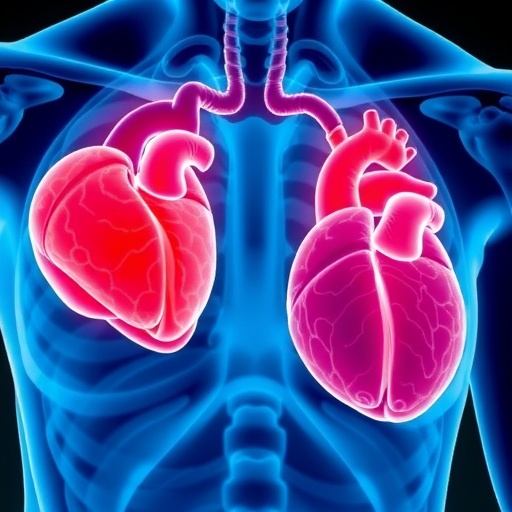A widely prescribed and affordable medication, historically used to treat gout, is now the subject of groundbreaking research for its potential to reduce the incidence of heart attacks and strokes in patients with cardiovascular disease. This revelation comes from a robust systematic review conducted by Cochrane, highlighting colchicine’s promise as a low-cost, anti-inflammatory agent in the prevention of secondary cardiovascular events. Chronic cardiovascular diseases frequently entail persistent low-grade inflammation, contributing significantly to recurrent adverse events. The identification of colchicine’s effectiveness in this context offers a profound shift in how clinicians might approach long-term cardiovascular care.
The systematic review aggregated data from twelve randomized controlled trials, encompassing nearly 23,000 participants who had a medical history indicative of either documented heart disease, previous myocardial infarction, or stroke. The analysis specifically targeted the effects of low-dose colchicine, typically administered as 0.5 mg once or twice daily, over a treatment duration of at least six months. The study populations were predominantly male—constituting about 80% of participants—with an age range spanning from middle-aged adults (57 years) to the elderly (74 years). This rigorous clinical data informed a comprehensive assessment of the drug’s safety and its efficacy in cardiovascular event reduction.
Quantitative outcomes from the review revealed that colchicine use correlated with a statistically significant reduction in the risk of heart attacks and strokes. Numerically, for every one thousand patients treated with low-dose colchicine, there were nine fewer myocardial infarctions and eight fewer cerebrovascular events compared to controls who received standard care without the drug or a placebo. Importantly, these benefits were observed without a concomitant increase in serious adverse effects, providing a compelling argument for the drug’s safety profile in this patient population.
The anti-inflammatory action of colchicine is central to its proposed mechanism in cardiovascular protection. Cardiovascular disease pathogenesis involves inflammatory cascades that exacerbate atherosclerotic plaque instability, ultimately precipitating myocardial infarctions and strokes. By dampening inflammation at the molecular and cellular levels, colchicine may stabilize these plaques, reduce systemic inflammation, and thereby lower the incidence of acute ischemic events. This mechanistic insight is supported by emerging data indicating colchicine’s modulation of neutrophil activity and inflammasome pathways—targets that conventional cardiovascular therapies do not typically address.
From a clinical perspective, the use of colchicine presents an attractive adjunctive therapy for secondary prevention. Current medical guidelines emphasize lipid-lowering treatments, blood pressure control, and antiplatelet agents as pillars of cardiovascular risk management. The addition of colchicine, as revealed in this extensive review, could complement these interventions by targeting the inflammatory underpinnings of recurrent cardiovascular events. This unique approach holds promise especially for patients who remain at high risk despite optimal standard care.
Despite these promising findings, the review underscores areas where colchicine’s benefits remain uncertain. While reductions in heart attacks and strokes were clear, the impact on overall mortality rates or the necessity for interventional procedures such as coronary revascularization was not definitively established. Moreover, data about colchicine’s influence on patients’ quality of life or hospitalization duration remain sparse. These gaps highlight the need for further high-quality studies to delineate the full clinical ramifications of colchicine therapy in cardiovascular disease.
Additional considerations include the drug’s side-effect profile. Although colchicine was generally well tolerated, patients experienced gastrointestinal symptoms, primarily mild and transient, which were more frequent than in the placebo groups. These side effects, including nausea and diarrhea, necessitate careful patient selection and monitoring during therapy. Nevertheless, the favorable balance between efficacy and tolerability positions colchicine as a viable option in secondary cardiovascular disease prevention.
The repurposing of colchicine exemplifies the potential of academic research to uncover novel therapeutic uses for established drugs. Originally an ancient remedy for gout, colchicine’s new application in cardiovascular disease could translate into substantial public health benefits due to its low cost and global availability. This fosters equitable healthcare by providing an accessible treatment option worldwide, particularly impactful in low- and middle-income countries where the burden of cardiovascular disease is increasing.
The global scale of cardiovascular diseases, recognized as the leading cause of death worldwide, magnifies the significance of identifying affordable, effective treatments. Colchicine’s repositioning for cardiovascular event reduction aligns with broader efforts to curb the epidemic of heart disease through innovative, yet pragmatic, solutions. If integrated into clinical practice, colchicine could reduce the socioeconomic impact of cardiovascular events and enhance patient outcomes at population levels.
Colchicine’s journey from an ancient anti-gout medication to a contemporary cardiovascular agent is buttressed by a wealth of publicly funded research initiatives. This underscores the critical role of independent academic investigations in diversifying the pharmacopeia against complex diseases. By rediscovering and revalidating existing drugs, researchers can bypass the lengthy and expensive drug development process, accelerating the availability of new treatment options for pressing health challenges.
Future research directions might include elucidating colchicine’s effects in diverse patient subgroups, optimizing dosing regimens, and exploring combination therapies. Longitudinal studies focusing on hard endpoints like mortality, hospitalization metrics, and health-related quality of life will enrich the evidence base. Moreover, mechanistic studies could deepen understanding of colchicine’s role in inflammation modulation within cardiovascular contexts, potentially unveiling biomarkers for treatment responsiveness.
In summary, colchicine stands at the frontier of cardiovascular disease management as a promising anti-inflammatory agent capable of preventing recurrent ischemic events. Its established safety, affordability, and efficacy in reducing heart attacks and strokes present a compelling case for its integration into secondary prevention protocols. As cardiac disease continues to afflict millions worldwide, this novel application of an age-old drug offers renewed hope for mitigating the persistent threat of cardiovascular morbidity and mortality.
Subject of Research: People
Article Title: Colchicine for the secondary prevention of cardiovascular events
News Publication Date: 12-Nov-2025
Web References: http://dx.doi.org/10.1002/14651858.CD014808.pub2
Keywords: Cardiovascular disease, Heart disease, Cardiovascular disorders, Cardiac arrest, Heart failure, Heart, Academic publishing, Inflammation, Medications, Antiinflammatory drugs, Clinical medicine
Tags: anti-inflammatory agents in cardiologycardiovascular disease preventionchronic inflammation and heart diseasecolchicine dosage and administrationcolchicine efficacy in secondary preventiongout medication colchicineheart attack and stroke risk reductionlong-term cardiovascular care strategieslow-cost heart disease treatmentmale participants in cardiovascular studiesrandomized controlled trials colchicinesystematic review of colchicine





